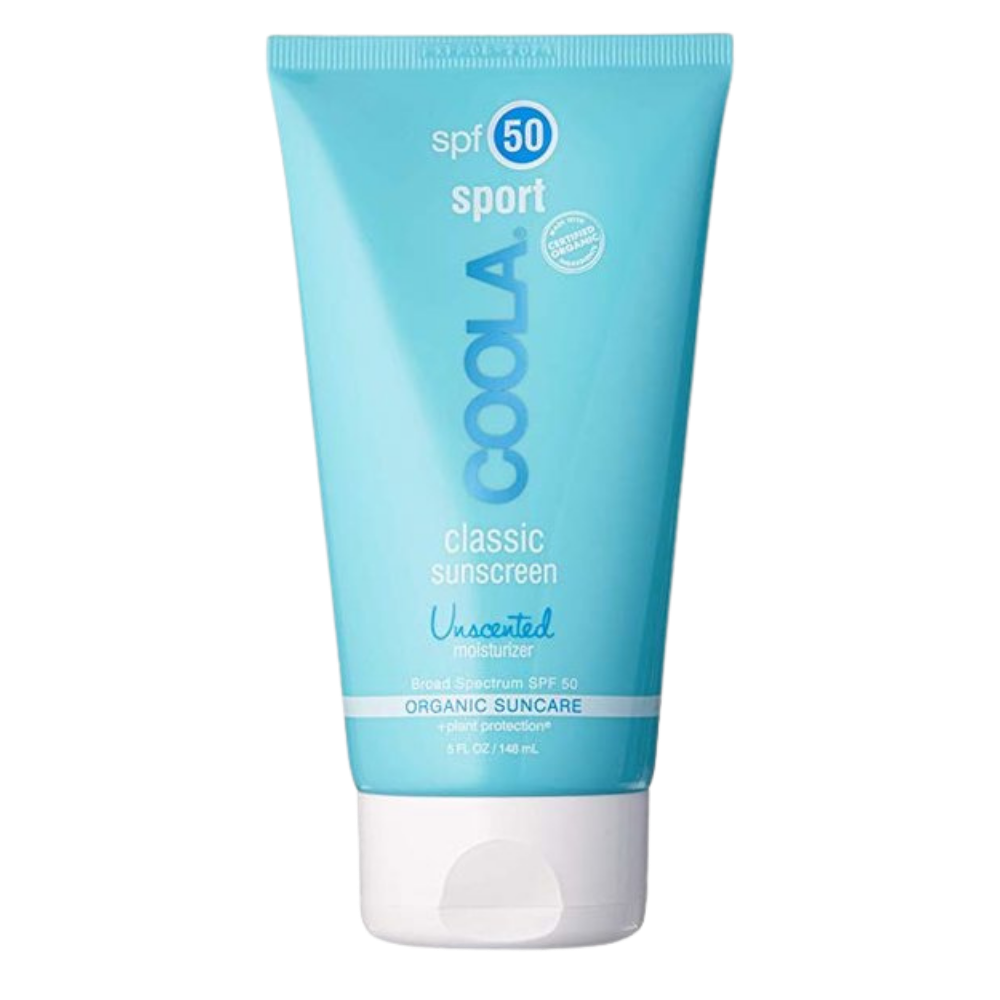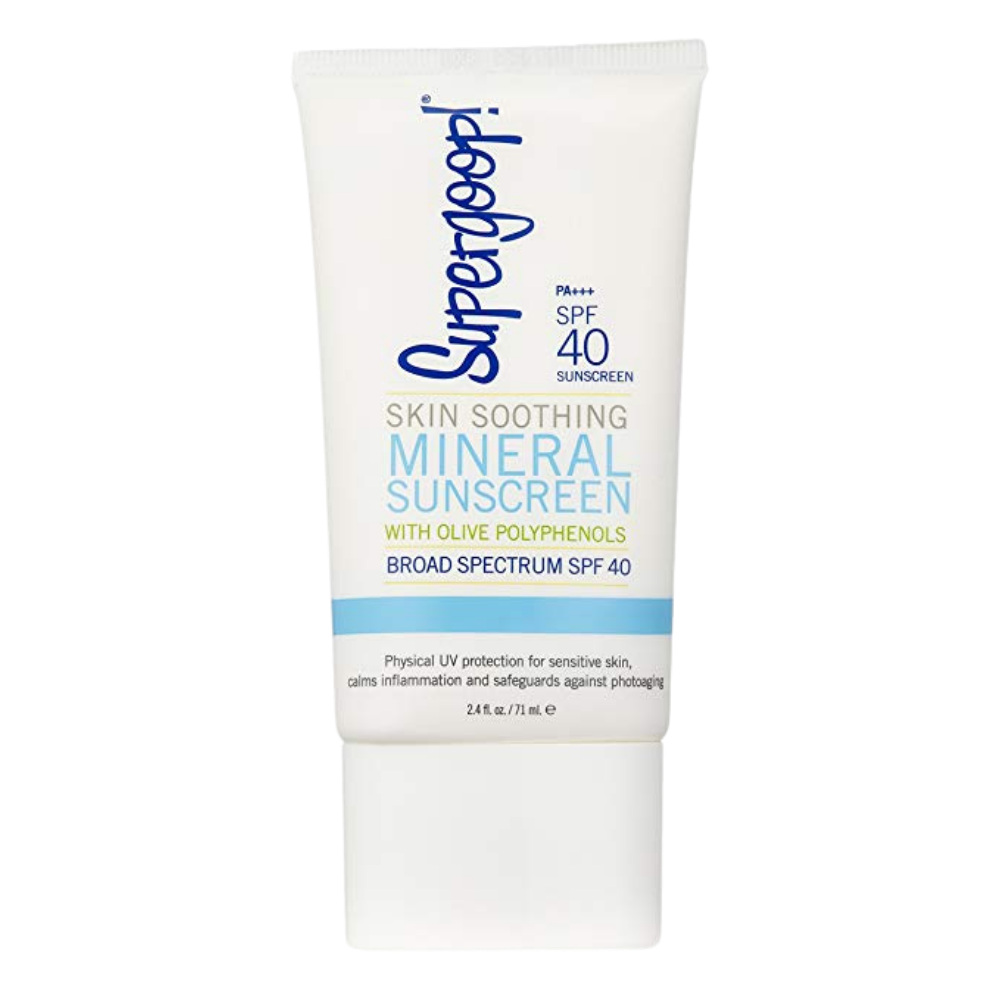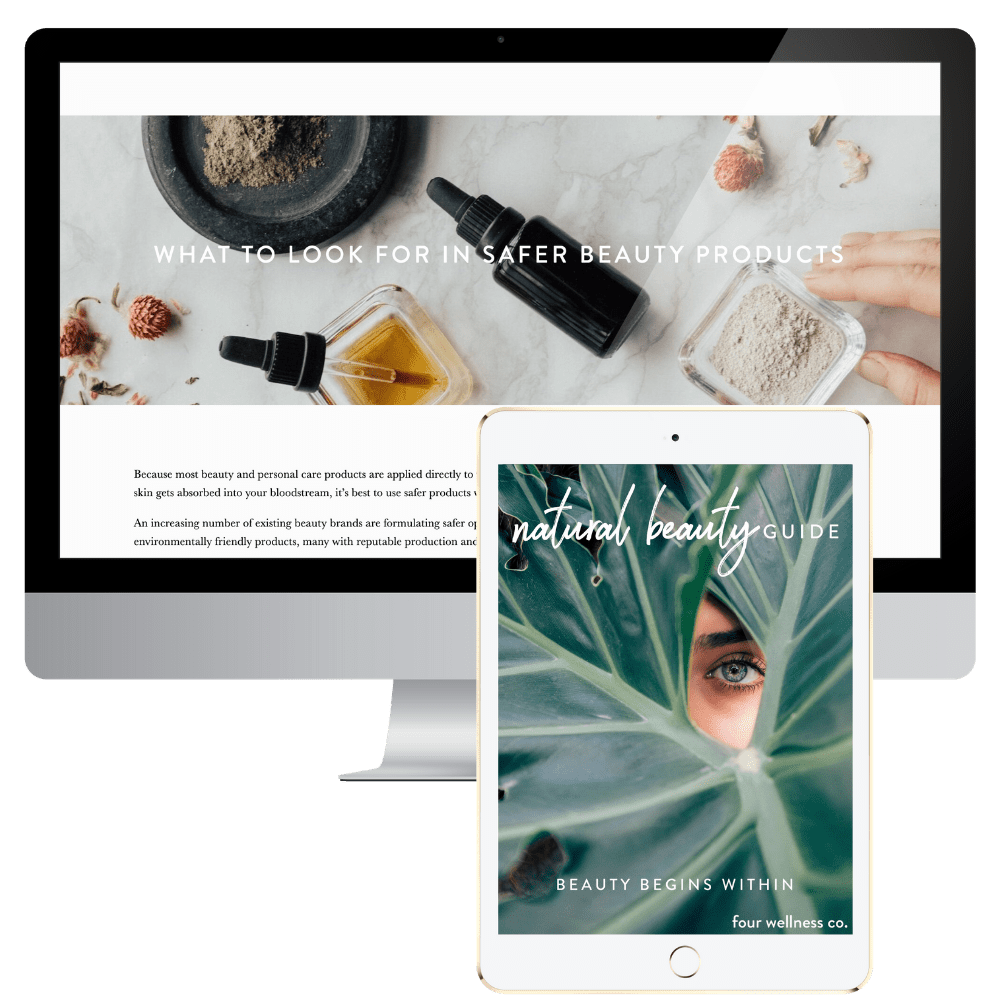Natural Sun Care (It's More Than Just Sunscreen!)
This post contains affiliate links, through which we may earn a small commission if you choose to purchase, at no additional cost to you. We only share products or services we personally use & recommend!
‘Tis the season for a nice sun-kissed glow, but it’s also an important time to make sure you protect your skin from summer’s stronger rays. ☀️
Depending which expert you ask, you’ll likely hear conflicting information about what constitutes good sun protection. Some say you need plenty of sunlight to maintain sufficient vitamin D levels; and some say you should protect your skin by avoiding direct sunlight at all costs.
So, it’s not surprising that most of us don’t really know: How much sun exposure is enough? Which sunscreens are the most effective? The healthiest? Should you stay out of the sun altogether?
In order to make sense of what’s best for your skin and overall health, it’s helpful to have a little background understanding of why we need sun protection in the first place, and what the different options do for us.
Why is sun protection necessary?
Chemical sunscreen wasn’t invented until the 20th century, so it certainly wasn’t an option for most of human history. Before that, sun protection came in the form of clothing, parasols, natural oils (the ancient Greeks used olive oil) and avoidance. But even before that, there was nothing. Just sun on skin.
So, if rampant sunlight was a healthy part of primal human life, why do we need to worry about it now?
First of all, evolution. As people moved out from the Fertile Crescent into higher latitudes where the strength of the sun’s rays are weaker, their skin adapted less melanin, the pigment that protects it from burning (and gives it its color)—hence, fair-skinned northern Europeans.
Second, habits. For most of human history, sun exposure was a byproduct of doing something outside (and, as is still seen in many cultures near the equator, activity was probably limited during the heat of the day, when the sun is strongest).
Over the past half century or so, we’ve developed totally different habits toward sun exposure: We spend most of our time inside but treat sun exposure as an activity in and of itself (“sunbathing” or “tanning”). Instead of regular sun exposure that builds up gradually with seasonal changes, we now bounce between extremes of hardly any sunlight, contrasted with more intense exposure at midday, in the name of tanning our skin for good looks.
So, it’s not completely surprising that in the past half century, fair-skinned Caucasians have developed higher rates of skin cancer than ever before.
The different types of UV
There are two types of ultraviolet radiation that reach the earth’s surface:
UVA is constantly present, regardless of the season, time of day, or cloud cover. These rays penetrate deeply into the skin, and are known for weakening elastin fibers and contributing to skin wrinkling and sagging. UVB, on the other hand, is strongest in the summer and at midday. It’s more damaging to the upper layers of the skin and is responsible for burning.
Overexposure of both UVA and UVB contributes to sun damage and increased risk of skin cancer.
Melanin is our natural sun protection
Ultraviolet light from the sun is necessary for human health, but too much exposure to it damages the DNA of our skin cells, causing them to age faster and possibly become cancerous.
So, the body has natural mechanisms to balance the need for sun with its adverse effects.
Sun exposure triggers the production of melanin (the dark pigment that gives skin its color) to provide protection from too much UV exposure. Melanin works by absorbing UV radiation, preventing it from reaching cellular DNA (darker colors reflect less sunlight, so absorb more of it).
This is why darker skin is selected for in areas of high sun intensity—it’s safer for the skin (which, remember, is our body’s largest organ!).
It’s also the purpose behind a tan: exposure to sun causes the skin to produce more melanin as a protective measure. And, freckles and moles in fair-skinned people also occur because of the same principle—they’re a clustering of melanin that absorbs sunlight, reducing the amount of UV radiation that hits nearby skin cells.
Sun damage and skin cancer
Despite these protective mechanisms, skin cancer has become relatively common—one in five Americans will develop it in our lifetime.
Most cases of skin cancer are easily treated with a timely diagnosis. Melanoma is a more aggressive form that accounts for only 2% of all skin cancers, but the vast majority of deaths from it.
About 90% of skin cancer instances are associated with overexposure to UV radiation.
If you’re fair-skinned and/or spend a lot of time in the sun, it’s a good idea to regularly examine your skin head-to-toe to take note of any changes.
The Skin Cancer Foundation recommends doing this self-exam once monthly.
So, given the clear linkage between overexposure to UV radiation and skin cancer, it’s obviously important to protect your skin from getting “too much sun.”
What’s wrong with conventional sun care
Typical recommendations from Western medicine revolve around limiting sun exposure and maximizing the use of sunscreen. The theory is that UV rays are damaging, so blocking them with a topical sunscreen or eliminating them via avoidance will reduce their impact and limit sun damage. However, there are a few problems with this approach:
Most sunscreens only protect against UVB
Most sunscreen products are designed to protect against sunburn (caused by UVB radiation), but they don’t offer much (or any) protection from UVA, which also causes cell damage that is linked to the development of skin cancer. Some “broad-spectrum” sunscreens aim to protect against both types of UV radiation, but are not as effective at blocking UVA as UVB. In fact, some are so ineffective at blocking UVA that they’re not allowed to be sold in Europe.
Chemical sunscreen is bad for you in other ways
Most sunscreens on the market are acutely toxic. (Shocked? Look up your go-to sunscreen on Environmental Working Group’s Skin Deep database for the details.)
The most common active ingredients in sunscreen are avobenzone, oxybenzone, homosalate and octinoxate. These ingredients have been linked to skin irritation, allergies and hormone disruption. Also, retinyl palmitate, a form of vitamin A found in about half of commercial sunscreens, has been shown to speed up skin damage and increase risk of skin cancer.
In general, you want to be careful what you let absorb into your skin (it’s your body’s largest organ) and that applies to sunscreen even more. During sun exposure, heat causes your skin’s pores to open up, allowing the sunscreen to enter your body and bloodstream more quickly. Once there, the negative health effects of putting chemicals on your skin may outweigh (or at least be comparable to) those of moderate sun exposure itself.
Vitamin D deficiency
Vitamin D is an essential nutrient needed for all sorts of proper bodily functioning, and sunlight is our primary source of it. Vitamin D is not common in natural food sources, with the exception of oily fish (like salmon, mackerel, and herring—which, interestingly, are most commonly eaten at higher latitudes with lower sun intensity).
Regular use of sunscreen inhibits vitamin D production, to the point of deficiency. Indeed, 25-50% of patients seen in a clinical setting are vitamin D deficient. Low levels of vitamin D are associated with weakened immune system, heart disease, hypertension, autoimmune disease and increased risk of many cancers.
Yes, skin cancer (including the deadly melanoma) is linked to too much sun exposure, but that doesn’t mean that no exposure is the answer.
Vitamin D reduces risk of skin cancer
Research shows that people who live in areas with more UV radiation have a lower risk of developing many types of cancer—like breast, prostate, lung, colorectal, leukemia, bladder, pancreatic and lymphoid to name a few. That’s consistent with findings that vitamin D itself reduces risk of skin cancer.
Recent studies also show that vitamin D kills melanoma cells, and that vitamin D levels at diagnosis impact the outcome for melanoma patients.
So, it turns out that reducing vitamin D synthesis (via sunblock or sun avoidance) is likely increasing our overall risk of cancer, worsening the prognosis, and causing a slew of other health concerns.
Despite use of sunscreen, rates of skin cancer are increasing
Rates of skin cancer aren’t moving the direction we would expect them to. Despite the fact that Americans spend less time outdoors and wear more sunscreen than ever before, melanoma rates are rising annually. Why would that be?
Sunscreen protects only against UVB radiation, which burns the skin, but does not protect against UVA, which also causes cell damage that is linked to the development of skin cancer. Because wearing sunscreen allows you to stay in the sun longer without burning, it removes your body’s natural feedback letting you know that it’s time to seek shade.
With sunscreen, we tend to get more intensive exposure than we should, resulting in harmful overexposure of UVA rays. This isolated UVA exposure (combined with vitamin D deficiency) seems to increase chances of developing melanoma. 😧
The best options for healthy & natural sun protection
So, what a conundrum! Your body needs sun exposure to stay healthy, but too much exposure has negative impacts.
Here are some tips for finding a healthy balance:
Build up sun exposure slowly
This is particularly important for anyone who lives in a colder, wintery climate. At the beginning of the “warm” season, build up sun exposure gradually. This will give your skin time to respond by producing more melanin, which will offer increased levels of sun protection itself.
Eat your sunscreen
No, not the lotion in a tube! But real food is actually some of the best sunscreen around.
Although mainstream medicine will be quick to tell you that diet has no real role in most of your health concerns, history (and your own experience) will usually tell you otherwise. The foods you consume do impact every cell in your body, including skin cells. Your diet can increase or decrease your skin’s sensitivity to UV rays, as well as its ability to repair itself when it does get damaged.
The dramatic rise in skin cancer rates also coincides with the American diet transitioning to high-grain, high-sugar and high-trans fat processed foods (with a decrease in vegetables and saturated fats). As we’ve replaced healthy whole foods with processed versions that promote inflammation and hinder healing, we’ve seen cancer rates skyrocket.
Sunburn is a type of inflammation, and diet has a tremendous impact on inflammation in the body.
Anti-inflammatory foods for sun protection
To reduce your sun-sensitivity and risk of sun damage, make sure you’re eating enough anti-inflammatory foods like:
Healthy fats rich in Omega-3s: Omega-3s help to reduce inflammation in your body and promote healing. Good sources include fish (like sardines and salmon), eggs, flaxseed and walnuts. Omega-3s are also available in supplement form via fish oil and flaxseed oil (vegan).
Other healthy saturated fats: Choose healthy saturated fats like coconut oil, avocado oil and organic grass-fed butter. Saturated fats are the building blocks of healthy skin (and hair and nails).
Veggies: The vitamins and antioxidants in veggies help to protect cells from the effects of UV radiation. Leafy greens and tomatoes are particularly good.
Other antioxidant-rich foods: Antioxidants help reduce inflammation and free radicals in your cells, as well as protect against sunburn and skin damage. In addition to veggies, berries, beans, nuts and green or black tea have high antioxidant properties.
Use natural sunblock
If you do need to use topical sunscreen, you’re best off using a mineral block, like zinc oxide or titanium dioxide.
Part of choosing the right sunscreen is understanding what SPF means. Most people assume that the higher the number, the stronger it is. That’s true, but only part of it.
Understanding SPF and sun exposure
SPF, or sun protection factor, refers to the fraction of UVB radiation (the sunburn-causing, vitamin D-synthesizing kind) that reaches the skin.
When applied “correctly” (quite thickly!), a SPF 15 sunblock allows 1/15th of the UVB radiation hitting your skin to actually penetrate it.
In other terms, the SPF number describes how much time it takes a person wearing sunscreen to burn, compared to how long it would take if they were wearing none. For example, if you burn in 10 minutes of unprotected sun exposure, applying SPF 15 means it should take you 150 minutes of exposure before you burn in the same intensity of sunlight (assuming you re-apply every two hours, as directed).
Tips for choosing natural sunscreen
Here are some tips for choosing (and using!) natural sunscreen:
Zinc oxide and titanium oxide offer protection against both UVA and UVB.
UVA protection in American sunscreen maxes out at about SPF 15-20.
Lower SPFs (like 15) should be fine for moderate use and sun intensity (you still want some rays to get to you for vitamin D purposes).
Choose lotions instead of sprays or powders, which are made with less-natural ingredients.
Avoid products containing vitamin A (also “retinyl palmitate,” “retinoic acid,” etc.), which speeds up skin damage and increases risk of skin cancer.
Mineral sunscreens are known for their visible white residue. To avoid the white streaks without compromising sun care safety, cross-check products on EWG’s best sunscreen list and your retailer’s customer reviews (they’ll tell you if the product rubs in well or not).
Read and follow the directions! To be fully effective, most sunscreens need to be applied liberally, 30 minutes before sun exposure and re-applied every two hours, or after sweating or towel drying. Studies have shown that most people only use a quarter to half the recommended amount of product.
OUr favorite natural sunscreens
Some of our favorite natural sunscreens are:
Cover up
If you’re going to be in the sun for an extended period of time, wear a hat and cover up your shoulders, neck, arms and any other part of your body that will take direct sunlight. Typical summer fabric has an SPF somewhere between 4 and 7. (Generally, the tighter knit the fabric, the higher the protection.)
The benefit of covering up (instead of using sunscreen) is that it doesn’t get into your bloodstream, it doesn’t need to be re-applied, and its lower SPF still gets you some vitamin D.
Supplement with vitamin D
As noted above, optimizing vitamin D levels helps the body defend against sun damage. Especially if your levels are low, try taking up to 4,000 IU daily to counteract the effects of a primarily indoor lifestyle. Here are our favorite vitamin D supplements and recommendations for supplementation.
Check your medications
Some antibiotics and other medications (including topical acne products!) increase sun sensitivity and your susceptibility to sun damage. Be aware if you’re using such a product and consider replacing it with another option if you can.
Natural Beauty Guide
Beauty begins within! Our Natural Beauty Guide (part of our Wellness Library of healthy living guides + resources) includes:
✔️ the common toxins to avoid in conventional cosmetics
✔️ how to shop for healthier beauty + personal care products
✔️ simple tips for natural beauty and personal care—from the inside out
✔️ a checklist to build your own chemical-free beauty routine
FOUR WELLNESS TIP
Our bodies evolved to be exposed to sunlight daily, and our health suffers when we don’t get that. However, too much sun is equally, if not more, harmful. Follow the steps above to find a healthy balance. ☀️
















